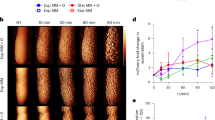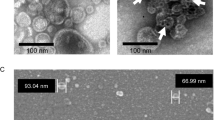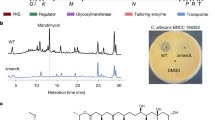Abstract
The requirement of metabolic energy for the interaction of polyene macrolide antibiotics with eukaryotic organisms remains a controversial subject (for review see ref. 1). It has been claimed that the lethal binding of these antibiotics to the sterol target component of the hydrophobic core of the membrane, in accordance with the model of de Kruijff and Demel2, is an energy-dependent process. When energy production is reduced by removal of all metabolisable substrates or by adding metabolic inhibitors, polyene binding and antifungal effects are also reduced. Metabolic energy may be required to maintain binding site accessibility or to move antibiotic molecules to the active site. The interaction is also restricted at low temperatures, possibly because of the reduced thermal mobilities of the groups concerned with antibiotic uptake. However, it should be emphasised that the interaction of polyene macrolides with artificial lipid membranes is a purely physicochemical process, although the type of permeability pathways induced are similar to those observed in natural membranes1. Using Chlorella vulgaris as a model organism, we demonstrate here that the interaction of polyene macrolides with sensitive cells and the induction of lethal membrane permeability changes are energy-dependent processes or purely physicochemical phenomena, depending on the structure of the antibiotic used.
This is a preview of subscription content, access via your institution
Access options
Subscribe to this journal
Receive 51 print issues and online access
$199.00 per year
only $3.90 per issue
Buy this article
- Purchase on SpringerLink
- Instant access to full article PDF
Prices may be subject to local taxes which are calculated during checkout
Similar content being viewed by others
References
Hammond, S. M. Prog. med. Chem. 14, 105–179 (1977).
de Kruijff, B. & Demel, R. A. Biochim. biophys. Acta 339, 57–70 (1974).
Schaedle, M. & Jacobson, L. Pl. Physiol. 40, 214–220 (1965).
Patterson, G. W. Pl. Physiol. 42, 1457–1459 (1967).
Lampen, J. O. & Arnow, P. W. J. Bact. 82, 247–251 (1961).
Malewicz, B. & Borowski, E. J. gen. Microbiol. (in the press).
Borowski, E. & Cybulska, B. Nature 213, 1034–1035 (1967).
Lambert, P. A. & Hammond, S. M. Biochem. biophys. Res. Commun. 54, 796–799 (1973).
Pandey, R. C. & Rinehart, K. L. J. Antibiotics 23, 414–417 (1970).
Borowski, E. et al. Tetrahëdron Lett. 8, 685–690 (1971).
Schaffner, C. P. & Borowski, E. Antibiotics Chemother. 11, 724–732 (1961).
Kolodziejczyk, P. et al. Tetrahedron Lett. 40, 3603–3606 (1976).
Author information
Authors and Affiliations
Rights and permissions
About this article
Cite this article
Malewicz, B., Borowski, E. Energy dependence and reversibility of membrane alterations induced by polyene macrolide antibiotics in Chlorella vulgaris. Nature 281, 80–82 (1979). https://doi.org/10.1038/281080a0
Received:
Accepted:
Published:
Issue date:
DOI: https://doi.org/10.1038/281080a0
This article is cited by
-
Membrane potential governs lateral segregation of plasma membrane proteins and lipids in yeast
The EMBO Journal (2007)



